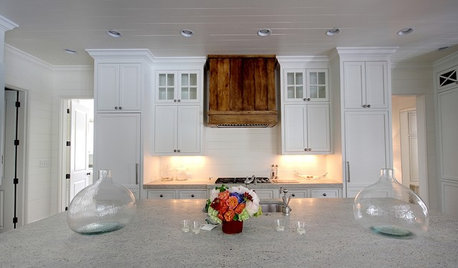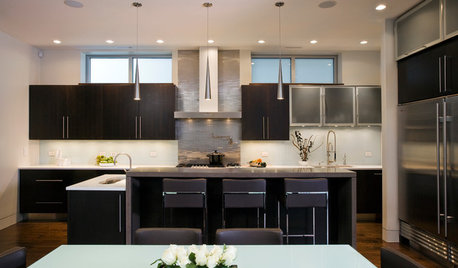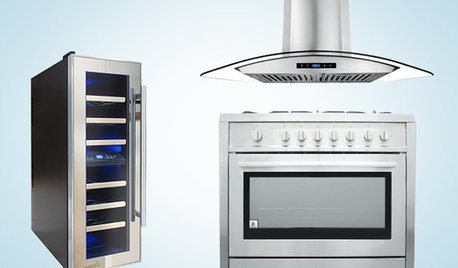How to choose range hood for induction?
Kiwigem
9 years ago
Related Stories

5 Stunning Modern Range Hoods
Today's kitchen range hoods can look like sleek sculptures. Here's what to look for when you go shopping for one
Full Story
KITCHEN DESIGNWood Range Hoods Naturally Fit Kitchen Style
Bring warmth and beauty into the heart of your home with a range hood crafted from nature's bounty
Full Story
SHOP HOUZZShop Houzz: Bestselling Range Hoods and Vents
Shop our most popular range hoods and vents to modernize your kitchen
Full Story0

SHOP HOUZZShop Houzz: Up to 60% Off Range Hoods and Kitchen Appliances
Update your kitchen with a new stove, range hood and wine fridge
Full Story0

KITCHEN APPLIANCESWhat to Consider When Adding a Range Hood
Get to know the types, styles and why you may want to skip a hood altogether
Full Story
KITCHEN DESIGNHow to Find the Right Range for Your Kitchen
Range style is mostly a matter of personal taste. This full course of possibilities can help you find the right appliance to match yours
Full Story
HOUSEKEEPINGHow to Clean Your Range and Oven
Experts serve up advice on caring for these kitchen appliances, which work extra hard during the holidays
Full Story
KITCHEN APPLIANCESThe Many Ways to Get Creative With Kitchen Hoods
Distinctive hood designs — in reclaimed barn wood, zinc, copper and more — are transforming the look of kitchens
Full Story
KITCHEN DESIGNHow to Choose the Right Hood Fan for Your Kitchen
Keep your kitchen clean and your home's air fresh by understanding all the options for ventilating via a hood fan
Full Story
KITCHEN DESIGNWhat to Know When Choosing a Range Hood
Find out the types of kitchen range hoods available and the options for customized units
Full StoryMore Discussions







hvtech42
a2gemini
Related Professionals
East Peoria Kitchen & Bathroom Designers · Hammond Kitchen & Bathroom Designers · Ridgewood Kitchen & Bathroom Designers · Schaumburg Kitchen & Bathroom Designers · Boca Raton Kitchen & Bathroom Remodelers · Jefferson Hills Kitchen & Bathroom Remodelers · Morgan Hill Kitchen & Bathroom Remodelers · Republic Kitchen & Bathroom Remodelers · Spanish Springs Kitchen & Bathroom Remodelers · Effingham Cabinets & Cabinetry · Key Biscayne Cabinets & Cabinetry · Radnor Cabinets & Cabinetry · Watauga Cabinets & Cabinetry · Whitehall Cabinets & Cabinetry · Saint James Cabinets & Cabinetrykaseki
hvtech42
KiwigemOriginal Author
kaseki
KiwigemOriginal Author
kaseki
KiwigemOriginal Author
KiwigemOriginal Author
kaseki